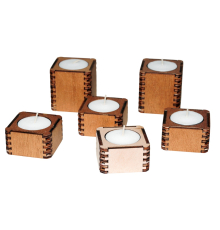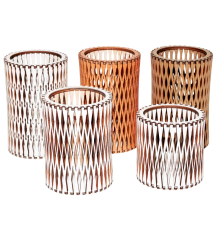Wooden toys: why is it better than plastic?
In recent years, more and more parents choose to buy wooden toys for their children instead of plastic. This trend is not only due to environmental concerns, but also many other advantages that make wooden toys a more attractive choice. In this article, we will look at why wooden toys are better than plastic and what benefits they offer for children and parents.
1. Environmental friendliness and safety
Wood is a natural, renewable and biodegradable material. Unlike plastic, which can contain harmful chemicals, wood is safe for children. Wooden toys are typically made without toxic paints or coatings, making them safer for babies, especially those who frequently put toys in their mouths.
2. Strength and durability
Wooden toys are known for their strength and durability. They don't break as easily as plastic and can withstand intense play and falls. Thanks to this, such toys can be passed down from generation to generation and retain their appearance and functionality. This makes them a better investment than their plastic counterparts.
3. Development of tactile sensations and motor skills
Wooden toys promote the development of tactile sensations and fine motor skills in children. They have a more natural texture and weight, which helps children develop hand-eye coordination and finger sensitivity. Due to the variety of shapes and sizes, wooden toys stimulate children's imagination and promote the development of creativity.
4. Attractive design and aesthetics
Wooden toys have a special charm and aesthetics that cannot be compared to plastic products. They often have simple but elegant shapes and colors that do not overwhelm the child's attention and help them focus on the game. In addition, such toys fit perfectly into any interior, making them not only fun, but also stylish elements in a child's room.
5. Development of imagination and creative thinking
One of the main advantages of wooden toys is their ability to stimulate imagination and creative thinking in children. Unlike plastic toys with ready-made play scenarios, wooden products give children more freedom of imagination. Simple shapes and designs encourage little ones to create their own games and stories, promoting creativity and independence.
6. To cultivate the value of manual labor
Wooden toys are often handmade, instilling in children an appreciation for labor and quality. They teach the value of craft and tradition, imparting important lessons about how things are made and why they are important. This is especially true in the modern world, where mass production is replacing manual labor.
7. Contribution to environmental education
Buying wooden toys is not only a concern for the child's health, but also a contribution to his environmental education. From an early age, children begin to understand that choosing natural materials helps preserve nature and reduce waste. This creates a responsible attitude towards the world around them and promotes conscious consumption.
Conclusion
Wooden toys offer many advantages that make them the best choice for children and parents. They are safe, durable, aesthetically pleasing and contribute to the child's all-round development. While plastic toys can be colorful and attractive at first glance, wooden toys provide a deeper and more rewarding play experience. When you choose wooden toys, you make a choice in favor of quality, safety and your child's future.











































